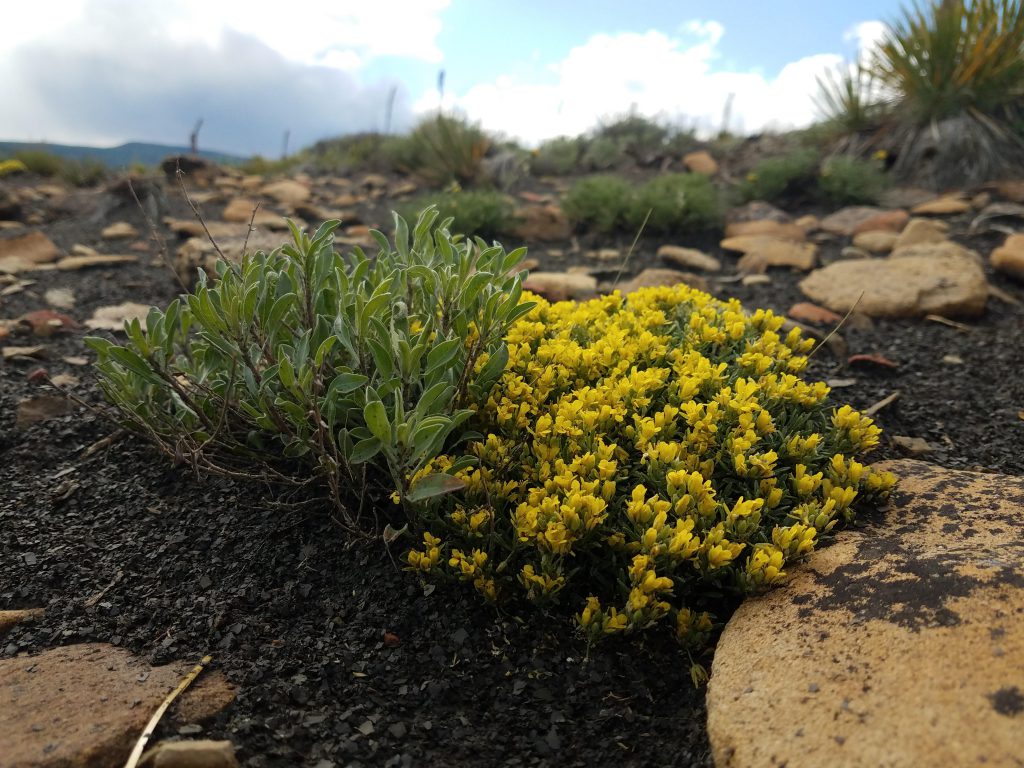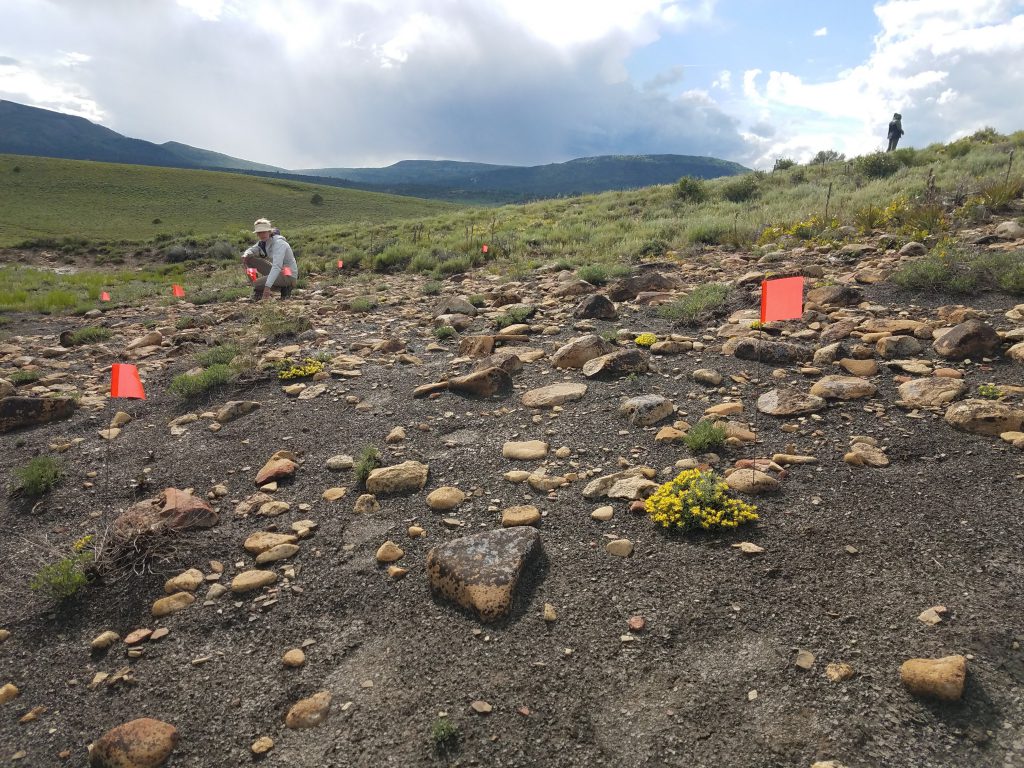By: Renee Lile
(CNHP Siegele Conservation Science Intern)
As a Siegele Conservation and Science intern, I had the opportunity to survey one of Colorado’s rare plant species—Physaria pulvinata, or the Cushion bladderpod. Physaria pulvinata is ranked as a G1/S1 by the NatureServe and Natural Heritage Program Network, meaning that there are five or fewer occurrences globally and statewide! In fact, you can only find this globally imperiled plant in two counties in Colorado: Dolores and San Miguel.
Since 2016, the CNHP has been monitoring Physaria pulvinata near Miramonte Reservoir and Lone Mesa State Park in Dolores County, Colorado. The purpose of the CNHP’s multi-year surveys of Physaria pulvinata is to gauge the plant’s long-term survival and performance. The data collected will also help Colorado Parks and Wildlife manage these public areas with minimal species disturbance.
My job was to help the CNHP botany team complete their fourth year of Physaria pulvinata surveys in Miramonte and Lone Mesa. During the workweek, I assisted the botany mentors (Jill Handwerk and Dee Malone) with gathering data from five cushion bladderpod plots. I would count the number of individual Physaria pulvinata plants along a 50 meter transect—grouping them by size. I also flagged communities of Physaria pulvinata within a proposed riparian development site near Miramonte Reservoir. The purpose of the flagging was to identify the areas that should not be developed or altered in order to protect the rare plant species.
The conservation aspect guiding the Physaria pulvinata surveys made the work incredibly fulfilling. And the breathtaking scenery of the Western slopes, the beauty of the cushion bladderpod, and the nights spent camping in Uncompahgre National Forest made the internship one to remember!

Blooming Physaria pulvinata in Lone Mesa State Park. The plant makes its home in the dark shale soils of Western Colorado 
Flagging Physaria pulvinata near Miramonte Reservoir.




